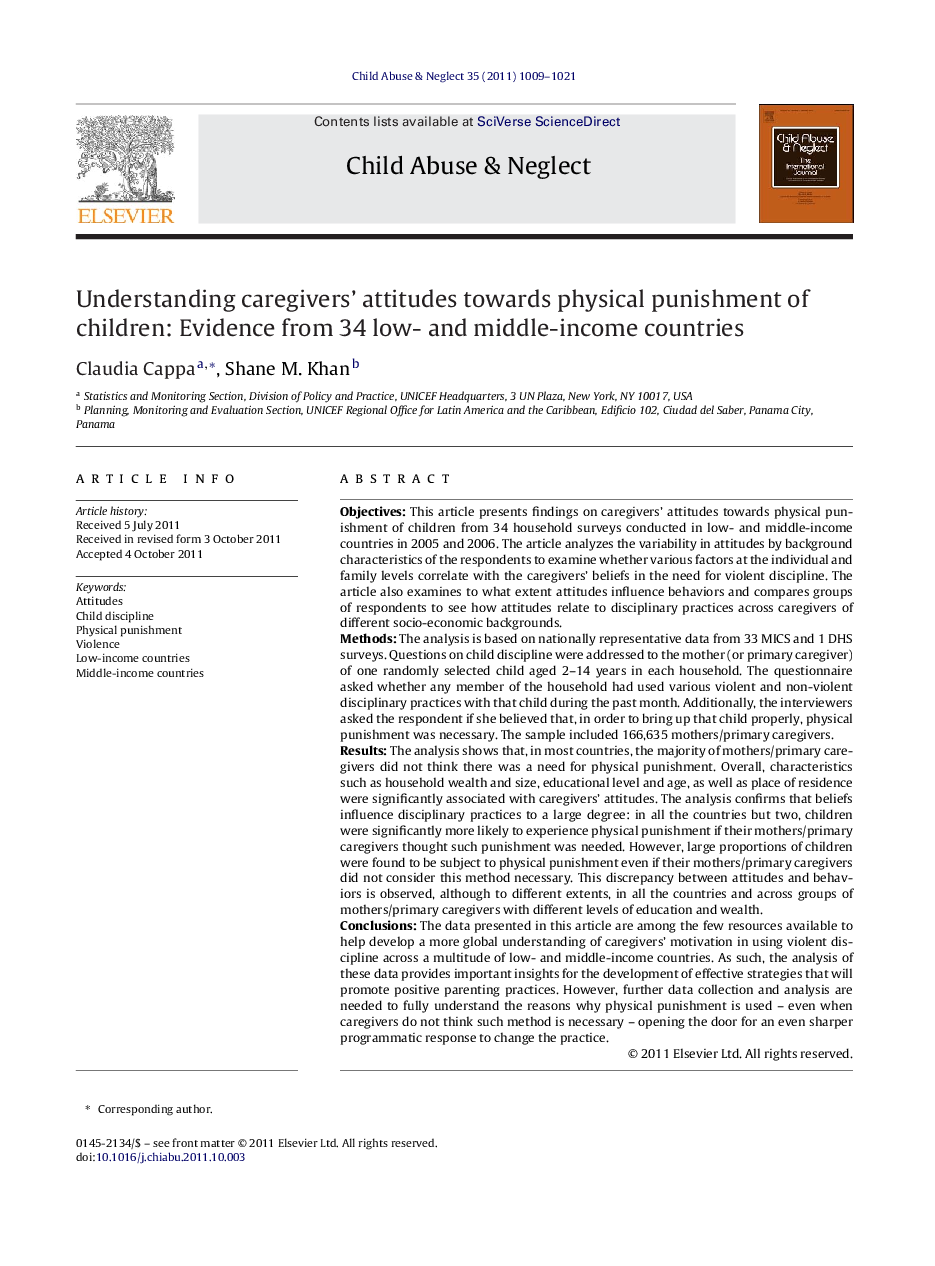| کد مقاله | کد نشریه | سال انتشار | مقاله انگلیسی | نسخه تمام متن |
|---|---|---|---|---|
| 344767 | 617451 | 2011 | 13 صفحه PDF | دانلود رایگان |

ObjectivesThis article presents findings on caregivers’ attitudes towards physical punishment of children from 34 household surveys conducted in low- and middle-income countries in 2005 and 2006. The article analyzes the variability in attitudes by background characteristics of the respondents to examine whether various factors at the individual and family levels correlate with the caregivers’ beliefs in the need for violent discipline. The article also examines to what extent attitudes influence behaviors and compares groups of respondents to see how attitudes relate to disciplinary practices across caregivers of different socio-economic backgrounds.MethodsThe analysis is based on nationally representative data from 33 MICS and 1 DHS surveys. Questions on child discipline were addressed to the mother (or primary caregiver) of one randomly selected child aged 2–14 years in each household. The questionnaire asked whether any member of the household had used various violent and non-violent disciplinary practices with that child during the past month. Additionally, the interviewers asked the respondent if she believed that, in order to bring up that child properly, physical punishment was necessary. The sample included 166,635 mothers/primary caregivers.ResultsThe analysis shows that, in most countries, the majority of mothers/primary caregivers did not think there was a need for physical punishment. Overall, characteristics such as household wealth and size, educational level and age, as well as place of residence were significantly associated with caregivers’ attitudes. The analysis confirms that beliefs influence disciplinary practices to a large degree: in all the countries but two, children were significantly more likely to experience physical punishment if their mothers/primary caregivers thought such punishment was needed. However, large proportions of children were found to be subject to physical punishment even if their mothers/primary caregivers did not consider this method necessary. This discrepancy between attitudes and behaviors is observed, although to different extents, in all the countries and across groups of mothers/primary caregivers with different levels of education and wealth.ConclusionsThe data presented in this article are among the few resources available to help develop a more global understanding of caregivers’ motivation in using violent discipline across a multitude of low- and middle-income countries. As such, the analysis of these data provides important insights for the development of effective strategies that will promote positive parenting practices. However, further data collection and analysis are needed to fully understand the reasons why physical punishment is used – even when caregivers do not think such method is necessary – opening the door for an even sharper programmatic response to change the practice.
Journal: Child Abuse & Neglect - Volume 35, Issue 12, December 2011, Pages 1009–1021